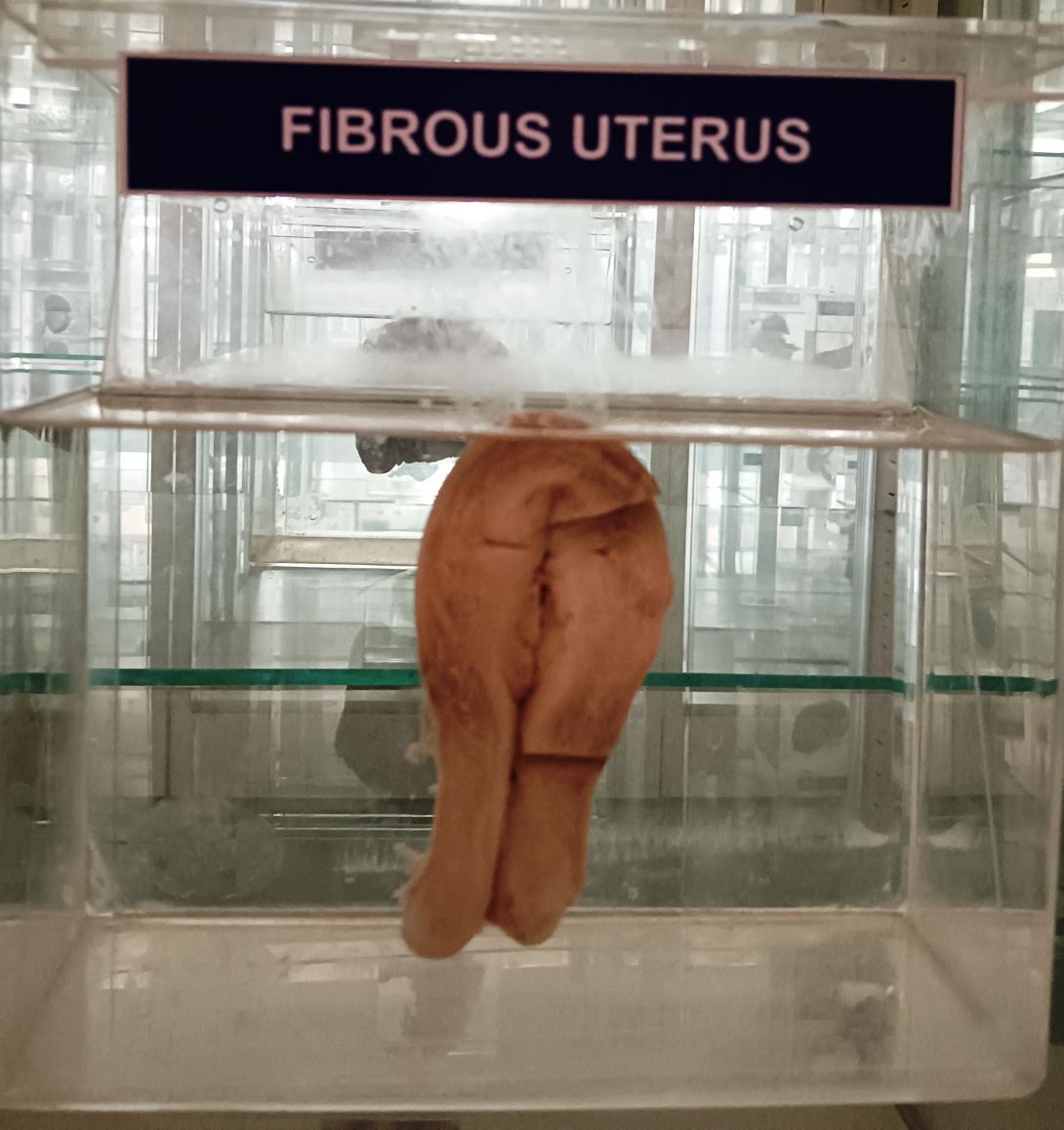What are uterine fibroids?
Uterine fibroids (also called leiomyomas) are growths made up of the muscle and connective tissue from the wall of the uterus. These growths are usually not cancerous (benign). Your uterus is an upside down pear-shaped organ in your pelvis. The normal size of your uterus is similar to a lemon. It’s the place where a baby grows and develops during pregnancy.
Fibroids can grow as a single nodule (one growth) or in a cluster. Fibroid clusters can range in size from 1 mm to more than 20 cm (8 inches) in diameter or even larger. For comparison, they can get as large as the size of a watermelon. These growths can develop within the wall of the uterus, inside the main cavity of the organ or even on the outer surface. Fibroids can vary in size, number and location within and on your uterus.
You may experience a variety of symptoms with uterine fibroids and these may not be the same symptoms that another woman with fibroids will experience. Because of how unique fibroids can be, your treatment plan will depend on your individual case.
Are fibroids common?
Fibroids are actually a very common type of growth in your pelvis. Approximately 40 to 80% of people have fibroids. However, many people don’t experience any symptoms from their fibroids, so they don’t realize they have fibroids. This can happen when you have small fibroids — called asymptomatic because they don’t cause you to feel anything unusual.
Who is at risk for uterine fibroids?
There are several risk factors that can play a role in your chances of developing fibroids. These can include:
- Obesity and a higher body weight (more than 20% over the weight that's considered healthy for you).
- Family history of fibroids.
- Not having children.
- Early onset of menstruation (getting your period at a young age).
- Late age for menopause.
Where do fibroids grow?
There are several places both inside and outside of your uterus where fibroids can grow. The location and size of your fibroids is important for your treatment. Where your fibroids are growing, how big they are and how many of them you have will determine which type of treatment will work best for you or if treatment is even necessary.
There are different names given for the places your fibroids are located in and on the uterus. These names describe not only where the fibroid is, but how it’s attached. Specific locations where you can have uterine fibroids include:
- Submucosal fibroids: In this case, the fibroids are growing inside the uterine space (cavity) where a baby grows during pregnancy. Think of the growths extending down into the empty space in the middle of the uterus.
- Intramural fibroids: These fibroids are embedded into the wall of the uterus itself. Picture the sides of the uterus like walls of a house. The fibroids are growing inside this muscular wall.
- Subserosal fibroids: Located on the outside of the uterus this time, these fibroids are connected closely to the outside wall of the uterus.
- Pedunculated fibroids: The least common type, these fibroids are also located on the outside of the uterus. However, pedunculated fibroids are connected to the uterus with a thin stem. They’re often described as mushroom-like because they have a stalk and then a much wider top.
What do fibroids look like?
Fibroids are typically rounded growths that can look like nodules of smooth muscle tissue. In some cases, they can be attached with a thin stem, giving them a mushroom-like appearance.
Are fibroids cancer?
It’s extremely rare for a fibroid to go through changes that transform it into a cancerous or a malignant tumor. In fact, one out of 350 people with fibroids will develop malignancy. There’s no test that’s 100% predictive in detecting rare fibroid-related cancers. However, people who have rapid growth of uterine fibroids, or fibroids that grow during menopause, should be evaluated immediately.

